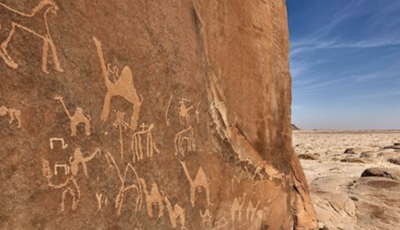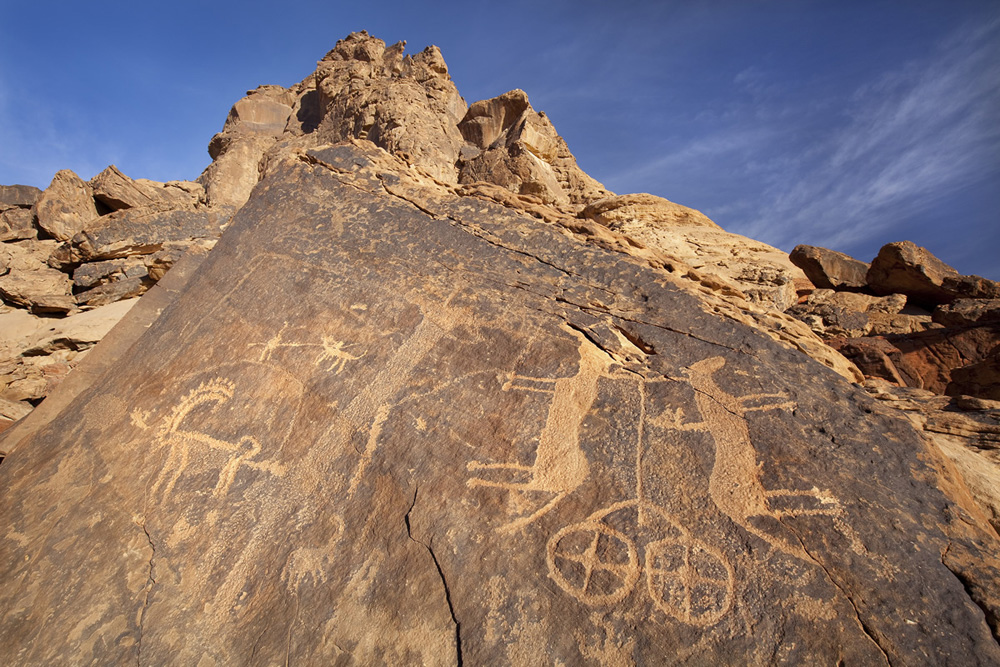Aramco Expats, an online blog that is a resource for current and former Saudi Aramco expatriates and their families, recently published a series of excellent blog posts on the seven wonders of the Arabia – the best heritage sites and historical places in the Kingdom.
In the fourth installment of the series of seven, Aramco Expats chose the rock art of of the Ha’il region of Saudi Arabia, drawn by ancestral Arab peoples populating the areas surrounding Jabel Umm Sinman and jabals al-Manjor and Raat.
“Ten thousand years ago a lake sat at the foot of the Jabel Umm Sinman hills, providing water to quench the thirst of animals and humans while enabling lush vegetation to flourish. Today, in stark contrast, one finds in its stead a dry basin hemmed in by sand dunes. That ancient lake and the distant, vaguely-hinted-at, prehistoric way of life it once helped sustain have long since vanished. Much the same can be said of the water sources, attendant environment, and early inhabitants of the region adjoining the rocky sandstone escarpments seen at Jabal al-Manjor and Jabal Raat at the base of which, in our current age, drifting sand fills a wadi where a life-giving stream once washed their feet.

Rock Art in the Ha’il region.
“The ancestral Arab peoples populating the areas surrounding Jabel Umm Sinman and jabals al-Manjor and Raat all those millennia ago may be long gone, but left behind by them on the imposing rock faces, remaining still as their enduring legacy for us to marvel at, is an astonishing assortment of petroglyphs and inscriptions. The archaeological remains present at these complexes speak of the vital role played by water sources—by lakes and wadis and oases—in the long history of the Arab people, while at the same time dramatically portraying identifiable stages in the evolution of life and society in the Ha’il region.
“In 2015, UNESCO recognized their unique historical value by inscribing Jabel Umm Sinman and jabals al-Manjor and Raat together as a single World Heritage Site despite their considerable geographic distance from one another, acknowledging them as the highest concentration of rock art to be found anywhere in the Kingdom.”
Recognizing the importance of the two sites, the Saudi government has provided for their preservation within the terms of the new antiquities, museums, and urban heritage law implemented in June 2015.
[Part 1 – Madain Saleh] [Part 2 – Historic Jeddah] [Part 3 – Ad Diriyah]









